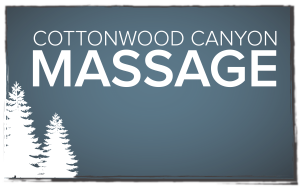Massage Techniques & Disciplines We Practice
Learn more about the various types of massage, how they are practiced and the individual techniques. If you are interested in a specific type of therapy, please let us know when booking your massage.
Swedish Massage
Swedish Massage is an overall body flush of the muscles and tissues. It involves soft, long, kneading strokes and light, rhythmic, tapping strokes on the topmost layers of muscles. This type of massage is best for those seeking a light, general flush of sore muscles or a relaxing and nurturing massage.
Deep Tissue Massage
Deep Tissue Massage relieves stiffness and pain in the body utilizing deep pressure, both broadly and specifically applied. The massage therapist will use slow, deliberate strokes that focus pressure on layers of muscles and tendons deep under your skin. Deep tissue massage is therapeutic. It diminishes chronic patterns of pain and tension and assists the healing of injuries. Deep tissue massage can also be used to restore range of motion by stripping and breaking down of scar tissue from old injuries.
Neuromuscular Massage Therapy
Neuromuscular Massage Therapy is a specialized, clinical form of massage that is useful for people with chronic and acute pain and dysfunction. The therapist can correct these issues by manipulating trigger points, muscle adhesions and fascial distortions. These dysfunctions can manifest due to specific traumas, postural imbalances, or repetitive movements. The touch is specific, holding pressure in certain areas and using deep strokes to strip adhesions and scar tissue.
Sports Massage
Sports Massage was developed to help with muscle systems used for a particular sport. It uses a variety of massage techniques to help athletes in training: before, during, or after performance. It can be used to promote flexibility, help prevent injuries, mend muscle strains and support healing after a sports injury.
Trigger Point Therapy
Trigger Point Therapy is the technique of applying specific, sustained pressure to various knots and bands that occur within the muscles of the body. These areas are clearly felt by the massage therapist, and they are often tender or achy to the touch. The sustained and then released pressure encourages blood flow into these areas that tend to be ischemic, which promotes healing and pain relief.
Myofascial Release
Myofascial Release is a very effective hands-on technique that involves applying gentle sustained pressure onto fascial connective tissue restrictions to eliminate pain and restore motion. This involves the pushing, grabbing and rolling of the skin to assist it to become loose upon the muscles, rather than restricted and tight. This massage technique is integrated into the massage of any client that needs it, and it is usually done in the beginning without lotion or oil.
Cranial Sacral
Cranial Sacral is a gentle, noninvasive form of massage that addresses the bones and muscles of the head, spinal column, and sacrum to help reduce stress and pain. This massage technique can help reduce overall stress levels, ease neck and back pain, and provide migraine headache relief.
Lymphatic Drainage
Lymphatic Drainage is a light, skin-stretching massage technique that helps promote the movement of lymphatic fluid out of the swollen limb. Therapy is applied to your unaffected areas first, making it possible for the fluid to move out of the affected area, or “decongest” the region. Your lymphatic system is one of your body’s waste removal systems, and it has no pump. The lymphatic system relies upon body activity and motion to move. All massage types and styles will help to move the lymph, but there are specific techniques that are utilized if you have swelling or are specifically in need of lymphatic drainage.
